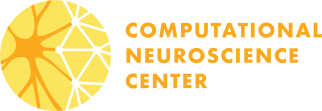by Lila Levinson
Neuroscience is rarely straightforward enough to describe in a catchy phrase. This is exemplified by dopamine, known popularly as the “pleasure molecule.” One of the few neurotransmitters to make its way into popular culture (it is referenced in over 90 band names on Spotify), dopamine is a key player in the reward mechanisms that make us feel good when our actions result in the desired effects or we experience something pleasurable. However, dopamine enthusiasts throughout the sciences have long been trying to bust the myth that dopamine equals pleasure – it contributes to the experience of rewards in a far more subtle way than its nickname suggests. A new paper in Nature Neuroscience from CNC co-director Adrienne Fairhall’s group at UW, including former CNC graduate student Rich Pang, and collaborators at Rockefeller University complicates this story even further, finding that dopamine may be playing many roles simultaneously and conveying more information than initially thought.
Decades of research have described dopamine’s role in forming associations between cues from our environments (e.g. the sound of an ice cream truck), actions taken in response to these cues (e.g. buying ice cream), and the outcomes of these responses (e.g. getting to eat ice cream). Far from simply signifying the pleasure we get from the ice cream, dopamine can be seen as a key glue that links the cues to their outcomes, making the otherwise neutral sound of tinny music have positive associations. Fairhall’s new paper, published in Nature Neuroscience on Monday, suggests that the same dopamine neurons that make these types of associations may also have other roles in learning. “[The] learning process isn’t just about associating one input with another [output], it also takes into account your own actions,” Fairhall says, and dopamine seems to play an important role in tying these different aspects of learning together.
In a set of experiments in the olfactory center of fruit flies, Fairhall’s group recorded dopamine release from a set of neurons that is known to be important in forming input-output associations during learning. Exposing the flies to the scent of a tasty snack (apple cider vinegar), they examined how the animals tracked down the source of the odor under different environmental conditions. Depending on how fast the air carrying the smell was moving, flies would use different strategies to most efficiently navigate towards their goal – walking quickly into a strong airflow that indicated the origin of the scent, but moving more slowly and constantly reorienting themselves towards the direction of the scent when the slow airflow did not clearly indicate which direction they should go. During this experiment, Fairhall says, the dopamine neurons’ activity “seem to select the properties of motion that are about carrying out the task.” When speed was the best strategy, dopamine release correlated with the fly’s forward velocity, whereas when navigation was more important, dopamine release correlated with the direction the fly was facing instead. Dopamine, therefore, is not just reflecting what the fly is doing, but the aspects of what it is doing that are meaningful in its current environment. Dopamine release patterns in some neurons could also be used to predict the actions flies would take to complete the tracking task before they even happened. In combination, these findings point towards broad roles for dopamine in representing past, present, and future facets of learning – with the same small sets of neurons conveying all of this information.
The rich, multi-level activity of dopamine neurons seen by Fairhall and her group complicates our understanding of how learning happens. By developing algorithms that reflect this complexity, Fairhall and others hope that we will be able to more effectively model the neural processes underlying learning and, potentially, use these findings to teach computers to learn more effectively.
The article, “Context-dependent representations of movement in Drosophila dopaminergic reinforcement pathways,” was published in Nature Neuroscience on Monday and is available online via the UW library.

